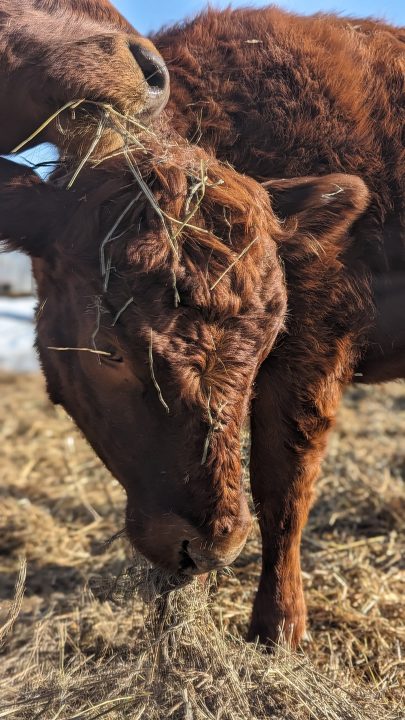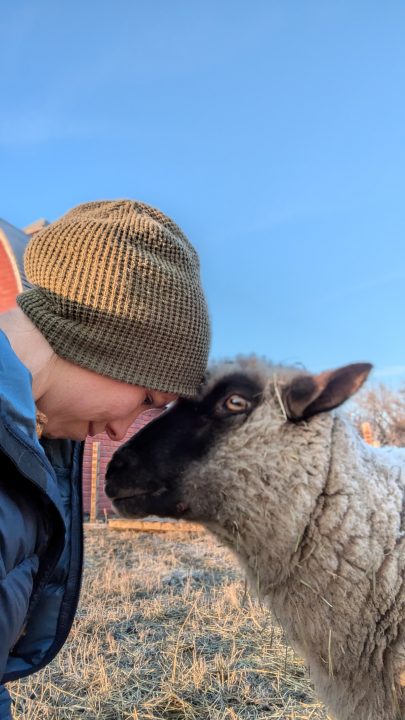“I realized we needed major changes in our approach, and that meant confronting my own weaknesses—things like financial management, planning, and forecasting.
I wanted to improve in those areas and sought out help, which led me to the Young Agrarians business mentorship program. It’s been exactly what I needed.”
– Anna Brown of Tapestry Homestead, Alberta
Young Agrarians is celebrating the eleventh year of the Business Mentorship Network (BMN) program in BC and the third year of the BMN in the Prairies! The BMN offers farm business mentorship to a diverse array of new and young farmers. The mentorship is offered over the course of a year. Through one-on-one mentorship, peer networks and online workshops new farmers develop the skills necessary to operate ecologically sustainable and financially viable farm businesses.
Applications for Mentees across Western Canada open in October 2025. Mentor applications are accepted year-round. Check out the Business Mentorship Network page for more information!
Meet a mentee from the current cohort and learn about their farm and why they joined the Business Mentorship Network. Want more? Head over to our BMN Blog for more mentorship stories.
Meet a Mentee: Anna Brown
My name is Anna Brown, and I am the farmer and founder of Tapestry Homestead. I farm on Treaty 6 territory, just east of Edmonton.
My mentors are Scott and Alena of Rocking T Farm near Wildwood, AB.
Our farm is relatively small compared to many of our neighbours. We currently farm about 10 acres and are working to apply regenerative agriculture principles to this land. It’s challenging because we’re surrounded by large-scale, conventional farms focused on annual tillage and commodity crop production.
The Call of the Land
My initial inspiration for farming goes back to my grandfather. He had a collection of books on self-sufficiency and the back-to-the-land movement, and I was captivated by them. As an adult, I was re-inspired by the writings of Michael Pollan and the farmers he referenced, as well as by those I encountered during university while studying alternatives to conventional agriculture.
I learned to farm through hands-on experience, like many first generation farmers these days. I started by interning with a shepherd who had dedicated her life to raising an endangered breed of sheep at Wholearth FarmStudio in Ontario. I spent a summer living and working on her farm, learning not only how she handled sheep but also what aspects of her model I wanted to adopt—or avoid.
From there, I moved back to Toronto and did a brief stint volunteering on an urban farm called Fresh City Farm within the city limits, which was an entirely new experience. Later, before buying our farm, I rented a small plot of land south of Edmonton at Greenhaven to familiarize myself with the different climate. Coming from Ontario, it was quite an adjustment.
Tapestry Homestead
Right now, we run our farm as a sole proprietorship because of its small size. Our primary focus is meat production, mainly lamb and pork. We’re also expanding into beef and working to make our chicken production more reliable and profitable. We haven’t ruled out returning to a market garden, but when we first moved here, it was prohibitively difficult.
For one, we had no suitable garden site with access to running water. I’ll never forget trying to carry 5 gallon buckets of water through the mosquitoes to water our 1/4 acre plot every evening for an entire summer. We also faced heavy pest pressure from the surrounding commercial crops. And, of course, Alberta’s weather makes consistent vegetable production a challenge. We put the market garden idea on hold while growing our family, but we plan to revisit it in the next two to five years.
We own our land outright and didn’t use financing from an official lender. We funded the farm with personal savings and support from family. While I’ve been on maternity leave, my husband’s income has covered farm expenses and maintained our breeding stock, which I’m incredibly grateful for. Still, we recognize that the farm needs to become financially self-sustaining. That’s what led me to the business mentorship program—to ensure that once we’re fully operational again, the farm can stand on its own.
Loving the Land
In terms of ecological practices, we are deeply interested in regenerative agriculture. We pay close attention to climate change mitigation, focusing on building drought-resistant pastures with improved water infiltration and resilience to temperature extremes. I’m also particularly interested in silvopasture—integrating trees and woodlands into our grazing system. Trees provide shelter for animals from heat and wind, and expanding our woodlot helps reduce soil erosion caused by strong prairie winds.
I take a lot of inspiration from podcasts, YouTube videos, and leading figures in alternative agriculture. Elliot Coleman’s work is fascinating example of what you can accomplish with limited tools and resources. For insights from similar climates across the Atlantic, I look to Charles Dowding and Richard Perkins are also major influences—Perkins, in particular, is incredibly transparent about the methodologies he used to build a profitable farm. Closer to home, Jean-Martin Fortier in Quebec has been a huge advocate for small-scale farming in Canada. I also follow Alan Savory and his pioneering work in Zimbabwe. Gabe Brown in North Dakota, whose work is especially relevant to our climate.
Beyond farming itself, Alice Waters has been a significant influence. She helped kickstart the farm-to-table movement a few decades ago. Ultimately, farmers need to connect with people who will buy their products, and her work has been pivotal in making those connections happen and advocating for a style of eating that raises awareness of where food comes from.

Asking for Help
I applied for the business mentorship because I had an opportunity for deep self-reflection. Our farm struggled in its first two years, and then our eldest child was born. The combination made farming nearly impossible for a time. I realized we needed major changes in our approach, and that meant confronting my own weaknesses—things like financial management, planning, and forecasting.
I wanted to improve in those areas and sought out help, which led me to the Young Agrarians business mentorship program. It’s been exactly what I needed.
My primary business goal for this season is to standardize and automate as much as possible. I want to create systems that ensure baseline repeatability and reliability, avoiding many of the mistakes we made in our first two years. The CSA model was particularly stressful for me as a first-time producer because people had already paid upfront, and I wasn’t always able to meet expectations. Our clients were incredibly gracious, but it was a huge personal blow. I never want to be in that position again.
That experience reinforced my commitment to structuring the farm in a way that ensures reliability and long-term sustainability.
Making Adjustments
Looking ahead, my focus is on refining our business model, improving efficiencies, and continuing to learn from experienced mentors and fellow farmers. I want to build a farm that not only provides high-quality food for our community but also serves as a sustainable, long-term livelihood for my family.
I appreciate the opportunity to be part of this mentorship program and to connect with others who share a passion for regenerative agriculture. I’m excited to see where this journey takes me and look forward to applying what I learn to create a thriving, resilient farm.
If you’d like to follow along on our journey, you can find us on Instagram at @tapestryhomesteader, where we share updates about farm life, regenerative practices, and what we’re learning along the way. You can also subscribe to our newsletter at tapestryhomestead.com to stay up to date on our progress, insights, and offerings. I’d love to connect with you there!


 Filter by Popular Categories
Filter by Popular Categories

